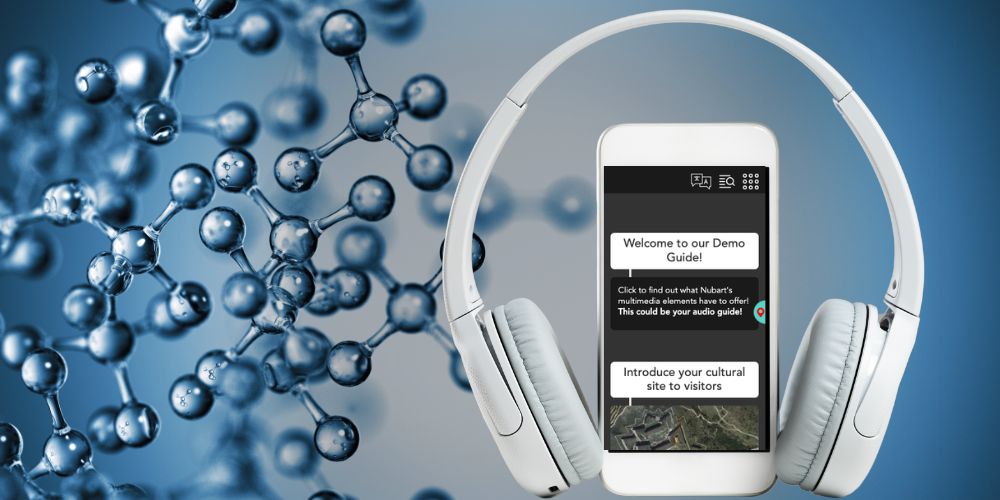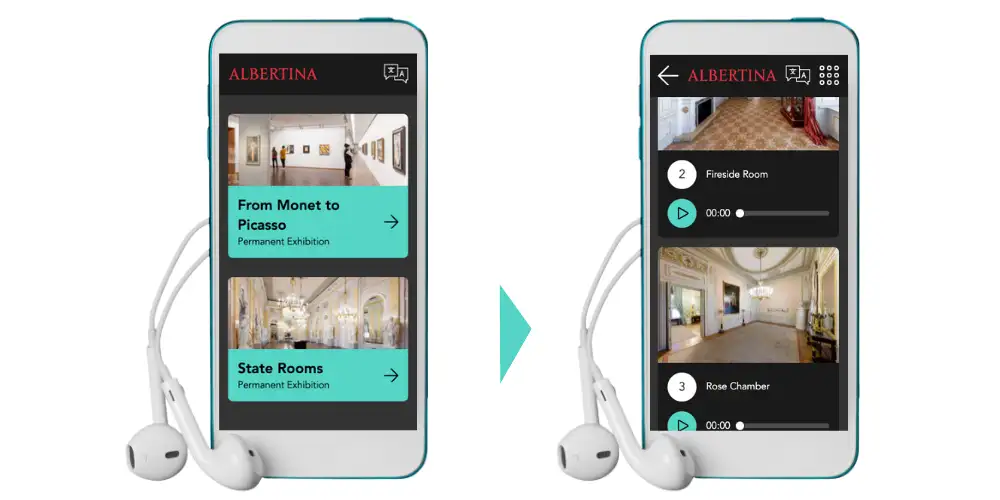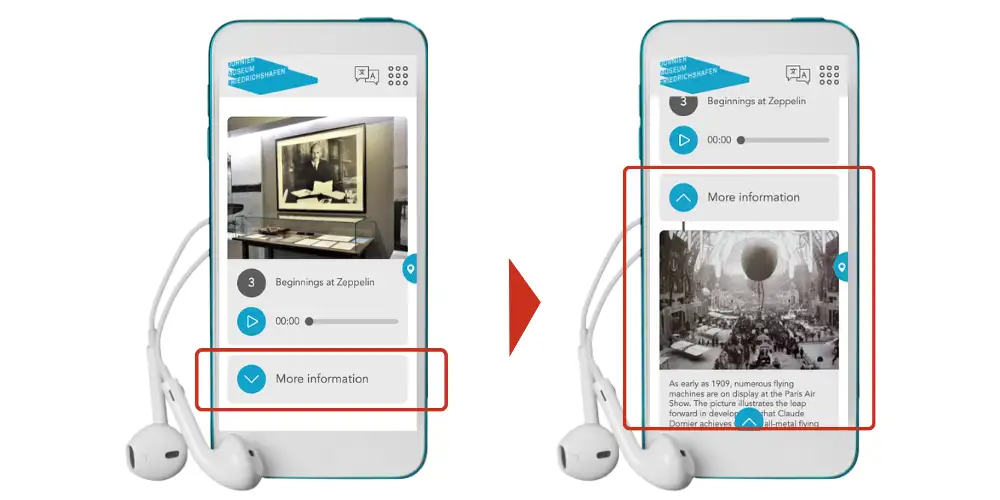
Nubart Team
IT Development
User-friendly structure of museum audio guides

Digital audio guides offer more possibilities than ever to integrate multimedia content. This article is about what you should keep in mind when structuring the content of your audio guide so it still remains user-friendly and clear.
With traditional audio guide devices you don’t have to worry much about the structure of the content: usually visitors type the number of an exhibit on the device’s keypad and receive the corresponding audio explanation.
Even though most digital audio guides (whether apps or PWAs) also offer the ability to type in a number to reach specific content, with the rise of touchscreens new opportunities but also new challenges arise. The goal is to structure the multimedia content of the audio guide on the small screen of the smartphone in a way visitors enjoy using their digital audio guide frequently.
How to structure your digital audio guide so it becomes user-friendly
Obviously, visitors should use your audio guides a lot during their visit. That's why it's so important to have a user-friendly structure, so that people can use the guide intuitively, without having to think too much about it. The main reasons why this is so important are that not every museum visitor is a digital native and the guide is not the main focus of the visit. It plays a supporting role, and visitors are expected to pay most of their attention to the exhibition itself. As a result, they won't have the time or interest to figure out how the guide works.
The following points make the structure of the audio guide user-friendly:
- Reasonable structuring of the content
- Intuitive navigation
- Personalized content
Reasonable structuring of the content
Usually an audio guide consists of one or more lists of the different stations along the route. Each of these stations contains an audio track and possibly other multimedia elements such as videos or photos.
The way in which these lists and stations are structured is of paramount importance to the user-friendliness of the audio guide. In large and complex exhibition sites, it is helpful to provide a branched structure, with each branch consisting of a separate list of stations.
The lists that structure the audio guide should provide clarity and relate to the actual circumstances of the audio tour. For example, if the exhibits are spread over two or three floors or two different buildings, it is advisable that the structure of the audio tour takes this into account, as it will make it more user-friendly and help visitors find their way around.
However, care should be taken with thematic lists if they do not correlate with the physical exhibition space. When designing the user-friendly structure of a digital audio guide, it is important to keep in mind the route a visitor will take. For example, if medieval artefacts share a space with modern history artefacts, it is usually better to prioritise spatial distribution rather than chronological or thematic congruence.
Nubart's modular system
To solve this problem of user-friendly structuring Nubart developed a modular system which organizes broad sets of content in blocks or modules that are well differentiated from each other.
This way of organizing content is ideal for venues that have several independent buildings or spaces. For example, the Riotinto Mining Park in Huelva (Spain) consists of a museum, a train, a mine and a house, so we created separate modules for each of these sites which were all integrated in the audio guide.

This modular structure is also ideal for separating content thematically or chronologically, mostly used by museums with many exhibitions, both permanent and temporary. In such cases, each exhibition is assigned a separate module. An example is the audio guide of the Albertina Museum in Vienna, Austria.

User-friendly structure through intuitive navigation
Navigating the audio guide should happen intuitively for the visitors, meaning the simpler the better. Besides a user-friendly structure of the content which is oriented towards the physical circumstances of the museum, the menu items should be easily understandable and single audio tracks should be accessed easily (with as few clicks as possible).
Nubart is arranging all the content of one module on one single site, enabling users to access different audio tracks through scrolling. If audio tracks are on separate sites users always have to switch between the overview page and the single audio track which takes a lot more time and is more complicated. Especially for older generations who are no digital natives, this feature makes handling the audio guide a lot easier.


Even more practical: through the optional feature of Geo-scrolling the right audio track slides to the upper side of the screen automatically when the user approaches the corresponding exhibit. In that manner, no clicks at all are necessary.
Personalized content
Not all visitors to a museum or attraction are interested in the same things. Some come to a museum because they find it coincidentally while visiting a city and only have time to see the exhibit’s highlights. Others may be great specialists of a subject and spend hours in front of a single display case.
Corresponding to the different interests of visitors, the audio guide should be adaptable in a flexible way. For those who are very interested additional knowledge and information should be accessible. Unlike traditional audio guide devices, digital audio guides allow easy extension of the information. Secondary audio tracks, but also videos, image carousels, superimposed images, 3D objects, downloadable PDFs, etc. can be added.
However, it is important that the (optional) expansion of content is presented in such a way that the structure of the audio guide remains clear and the visitor is not overwhelmed with an excess of information.
Collapsible button with more information
For this reason Nubart has created collapsible “more information” buttons. These buttons allow you to add a second level of depth to the audio guide tracks, without forcing visitors to leave the screen or distracting them from the main content. Users who wish to receive more information about a particular piece can do so and easily resume the tour. And if there is not enough time during the visit to consume all the content which is of interest, with the help of the QR code the audio guide can also be listened to at home.

Tags for a personalized structure
Another solution of Nubart to personalize the audio guide are tags. Tags are an ideal tool when you have to structure very rich and diverse content and you want to give users the option to filter it according to their particular interests.
A common use case are very large museums that want to enable visitors to filter the high volume of available exhibits according to their interests. An example is the audio guide of the National Museum of Slovenia in Ljubljana, which uses tags to offer visitors a 30-minute route with the highlights.
Therefore, the tag system helps both to limit and extend the content of the audioguide, always according to the visitor’s preferences, making the structure even more user-friendly.


